NVIDIA Tegra Note 7 Review
by Brian Klug on November 12, 2013 9:01 AM EST- Posted in
- Tablets
- Mobile
- Tegra 4
- NVIDIA
- Tegra Note
NVIDIA is launching Tegra Note running “100% stock” Android 4.2.2. The UI is essentially stock, although there are obviously additional items inside the settings menu which are Tegra Note specific, and of course the changes to accommodate Tegra Note’s built in stylus.
Like Shield, NVIDIA is responsible for timely OTA updates to Tegra Note, and although the tablet is launching running 4.2.2, you’ll basically get updates in step with the Tegra 4 BSP. There’s a few things missing from this version of the software we’re looking at right now that will make it into the final image in the December timeframe with Android 4.3, including always on HDR for the camera, and hopefully moving apps to SD card.
The customizations that NVIDIA has made to the Android platform primarily focus around compatibility with the custom stylus solution that lends Tegra Note its namesake. NVIDIA has coined it DirectStylus, and really it’s an evolution of DirectTouch, which offloads the touch controller processing after analog to digital conversion onto the shadow core onboard Tegra 4.
NVIDIA claims DirectStylus offers much the same feature set as an active digitizer at a fraction of the implementation cost. Instead of using an additional layer in the touch panel and a special stylus, this works with a normal capacitive stylus and digitizer. NVIDIA is being tight lipped about just how they’re sampling the display to enable detection of the two different stylus tips, but it does work.
The implementation supports almost everything you’d expect from an active stylus, including palm rejection, pressure sensitivity, orientation sensitive tips (like the chisel tip), and very fine control. The only obvious omission is hover support, which active systems still seem to have a leg up with. The real differentiator for the Tegra Note however is that it delivers almost all of the experience critical for note taking, drawing, or annotating documents at a fraction of the cost. I played around with DirectStylus inking on the Tegra Note and didn’t notice any problems, if you didn’t know better you could easily mistake the experience for one afforded by a much more expensive active solution, and at the same time this solution seems to have lower latency. NVIDIA claims 3x lower latency versus a Galaxy Note 8, and although I haven’t used one directly, inking lags behind my pen tip considerably less than I remember it lagging with the Galaxy Note 10.1 (2013) or Note 3, although those aren’t direct competitors. Palm rejection works well on the Tegra Note 7 as well, something I expected would be problematic given the shared capacitive sensing.
Tegra Note comes with a chisel tip stylus, although there’s also a fine point tip available. The stylus feels surprisingly nicely weighted, solid, and comfortable to use. I had limited success using the Tegra Note with the only other capacitive stylus I have available from the HTC One max, but NVIDIA claims it will indeed work with other popular capacitive styli.
The Tegra Note comes preloaded with two inking related applications out of the box, Tegra Draw, and Write. The first is self explanatory, it’s a simple drawing app with a color picker, a variety of available software tip types, and the ability to save to a final image. The Write application is a more fleshed out note taking app with basic organization support. What’s missing is the kind of comprehensive writing to text conversion that other devices which include inking support have, or the third party keyboard that takes advantage of inking.
When the stylus is withdrawn from its holder, at the bottom are two additional buttons. One allows you to lock out other capacitive inputs and put the Tegra Note in a pen-only mode, the other is a lasso like snipping and annotation mode which lets you grab anything on screen.
Although others have more fleshed out software support, NVIDIA has nailed what I’d consider the baseline set of features necessary for a product which emphasizes its note abilities. If taking notes or drawing is a priority, the Tegra Note’s value prospect is immediately obvious compared to some of the more expensive devices with active digitizers.
It’s also worth noting that Tegra Note includes support for console mode and the same level of bluetooth third party controller support that Shield brought. What’s absent however is GameStream compatibility, since Tegra Note lacks 5 GHz WiFi.


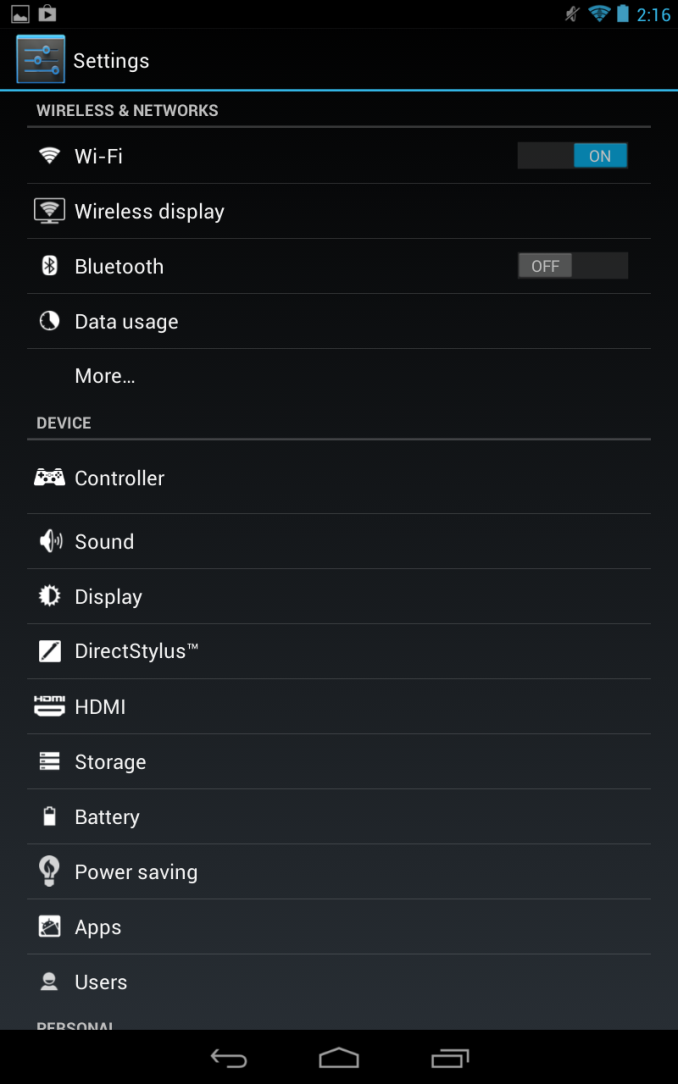
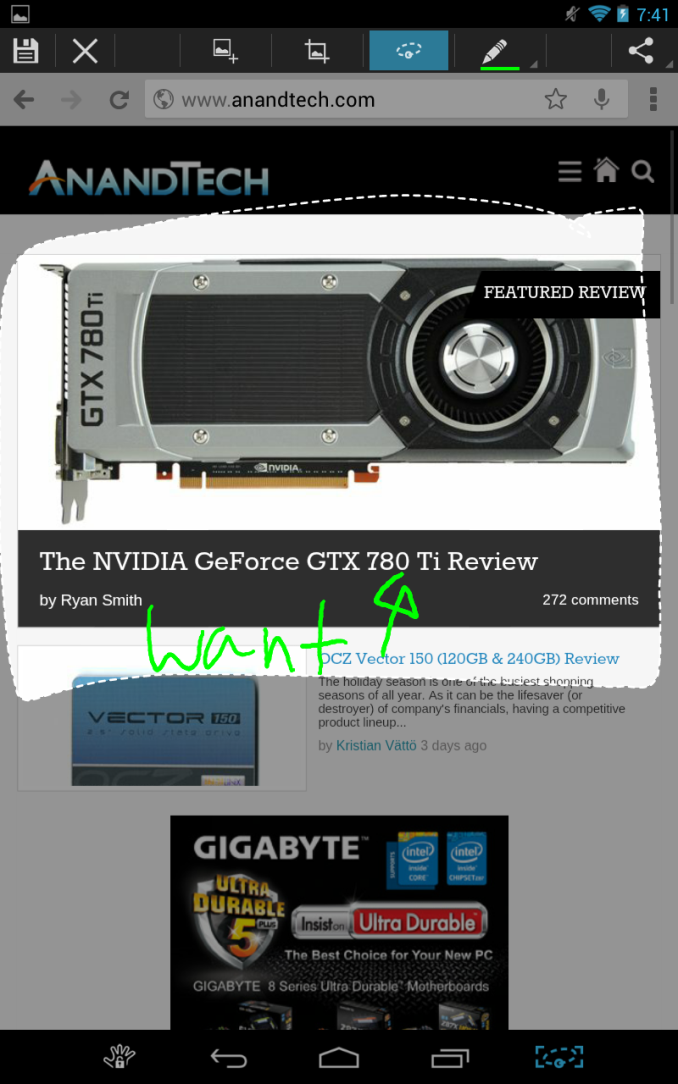


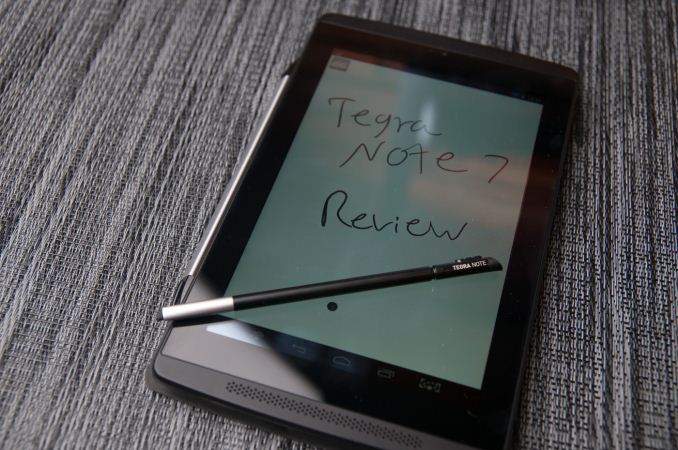
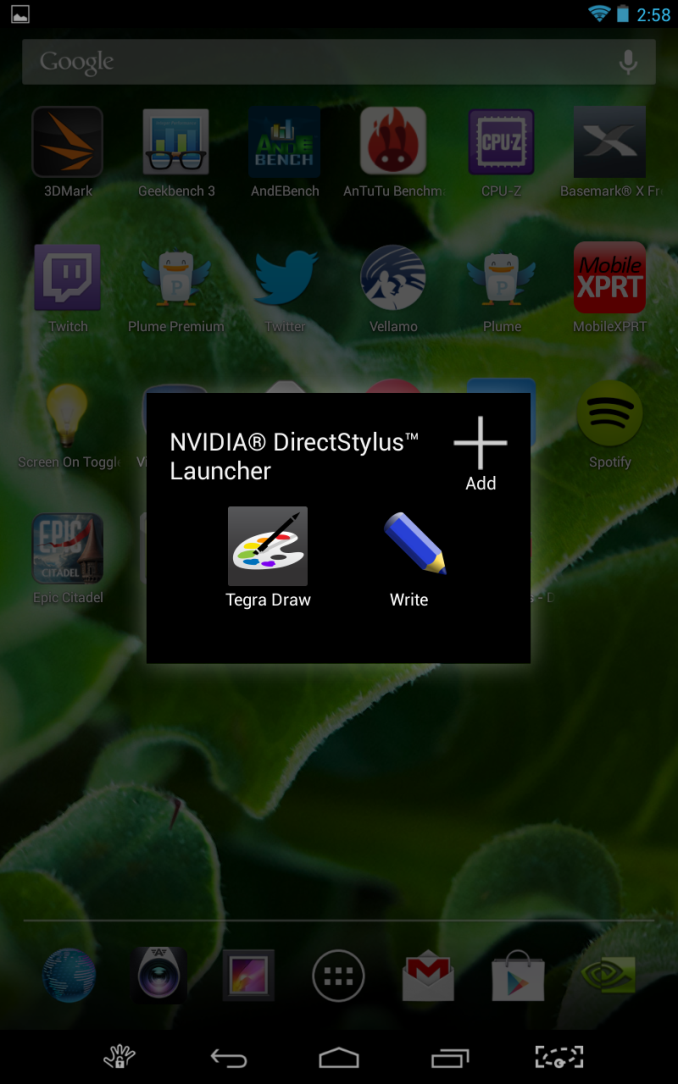
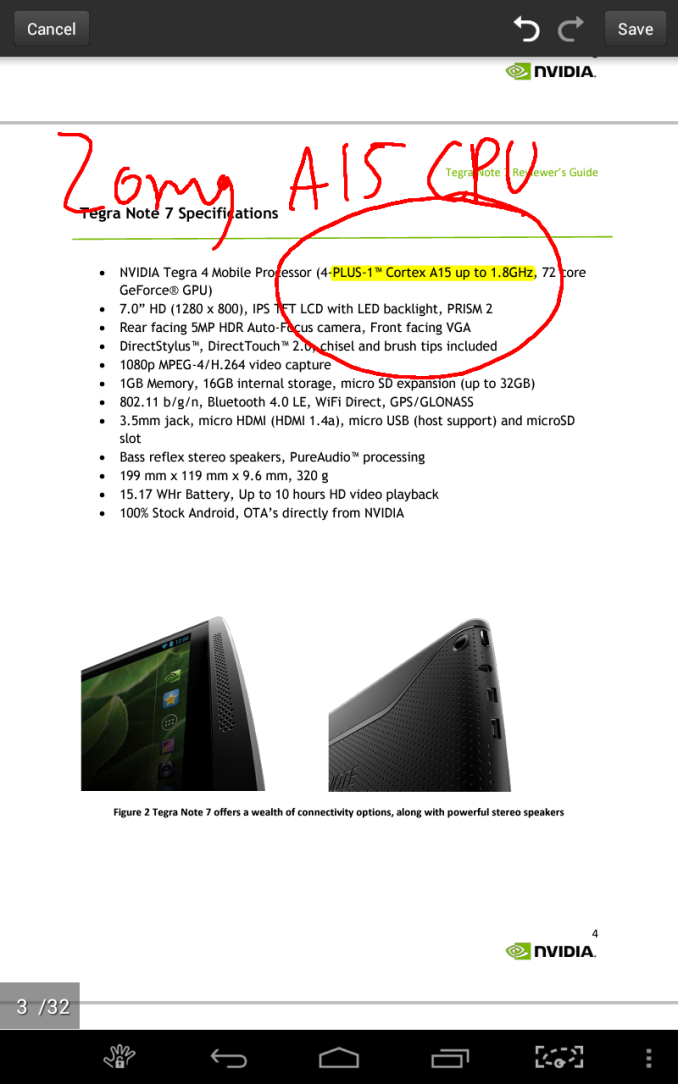

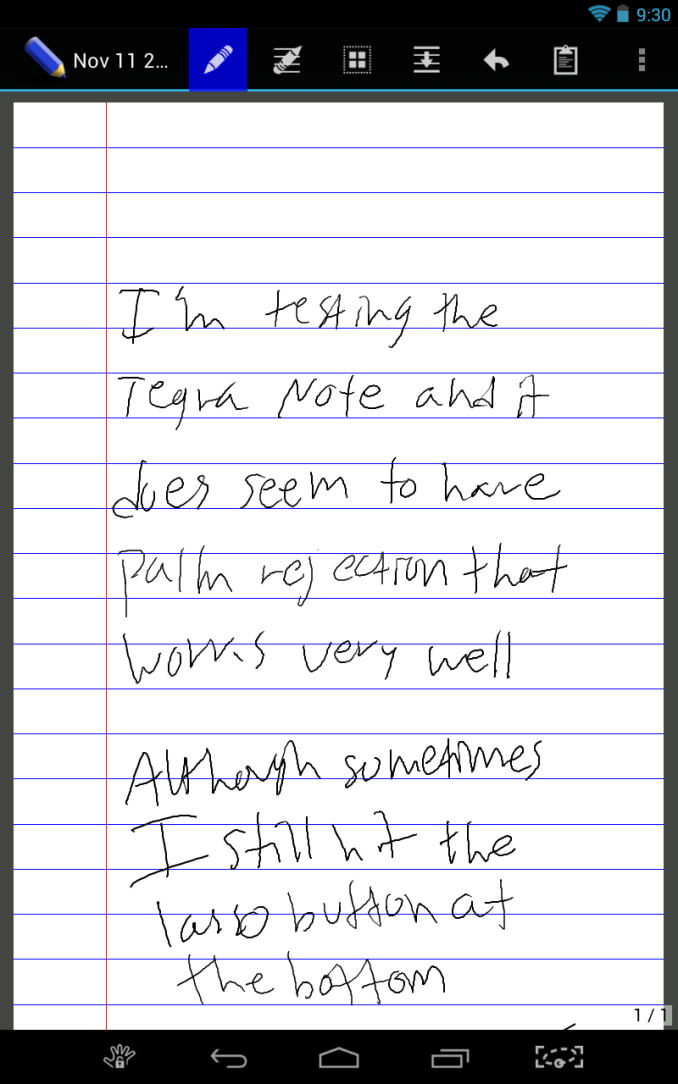








87 Comments
View All Comments
Anonymous Blowhard - Tuesday, November 12, 2013 - link
Didn't see any mention of this; I see it does have Console Mode, but what about the NVIDIA GamePad Mapper software?geniekid - Tuesday, November 12, 2013 - link
The one reason I'd get this over the Nexus 7 is for the microSD slot.Also, I would think the lower resolution would come with some battery savings. I wonder if the inefficiency here lies with the SoC or the display (or something else).
PC Perv - Tuesday, November 12, 2013 - link
What did you use to take pictures? They are horrendous.drexnx - Tuesday, November 12, 2013 - link
feel it all around? lolgeniekid - Tuesday, November 12, 2013 - link
I can't wait for the day when the state of mobile gaming will be such that reviews can focus on actual gameplay benchmarks instead of all the synthetics.Pirks - Tuesday, November 12, 2013 - link
It's already like that on iPad but why would you even be interested in any benchmarks on iPad?Simon42 - Tuesday, November 12, 2013 - link
You said nothing about the sub-par 1gb of ram! Do you have a test that could contrast it with 2gb devices, or at least some subjective impressions? I like to multitask a lot, open 10 tabs and switch from one app to the other, and I highly doubt this thing's superfast CPU can fully compensate for it. I've always felt that my Android devices improved mostly because they went from 512mb and 1gb to 2gb; that with my expectations and with the way I use my devices it has been more beneficial than upgrading to Qualcomm's excellent quad cores.I'm actively looking at something better suited to my needs and with a wider screen than my current 2013 Nexus 7. An SD card to exceed 32gb cheaply - I have lots of PDFs and MP3s - is crucial because any storage becomes slow when full (and now 4.3's TRIM eats battery when it has to work hard) and the stylus implementation looks great, but I won't trade the Nexus' glorious screen, RAM and amazing battery life for some extra speed I hardly need and which is probably only available when RAM is not full.
I was awaiting HP's Slate 8 and I was getting excited about its screen, but it's now confirmed that it too has only 1gb RAM so I'll want to try it but I probably won't buy it unless it multitasks just as well as what I currently have. Does anyone know of any upcoming Tegra 4 device with enough RAM and under 500 grams? I might have to wait for Chinese tablets with that combo and leftover iPad mini screens (Retina or not) or 8.9 inch full HD panels...
Dribble - Tuesday, November 12, 2013 - link
Tend to agree - the 1GB or ram would be a killer for me. Think they would have been better charging $250 for a 2GB ram and a full HD screen. Then you might think nexus is nice but for $20 I get an SD card, stylus better sound and a faster soc. Easy sell.ddriver - Tuesday, November 12, 2013 - link
iphones have 1 gb of ram, so "logically" 1 gb ram is the best amount of ramzodiacsoulmate - Tuesday, November 12, 2013 - link
not on android, but kitkat is opitimized for 512 and less ram? maybe facebook app will stop taking up 80mb of ram...